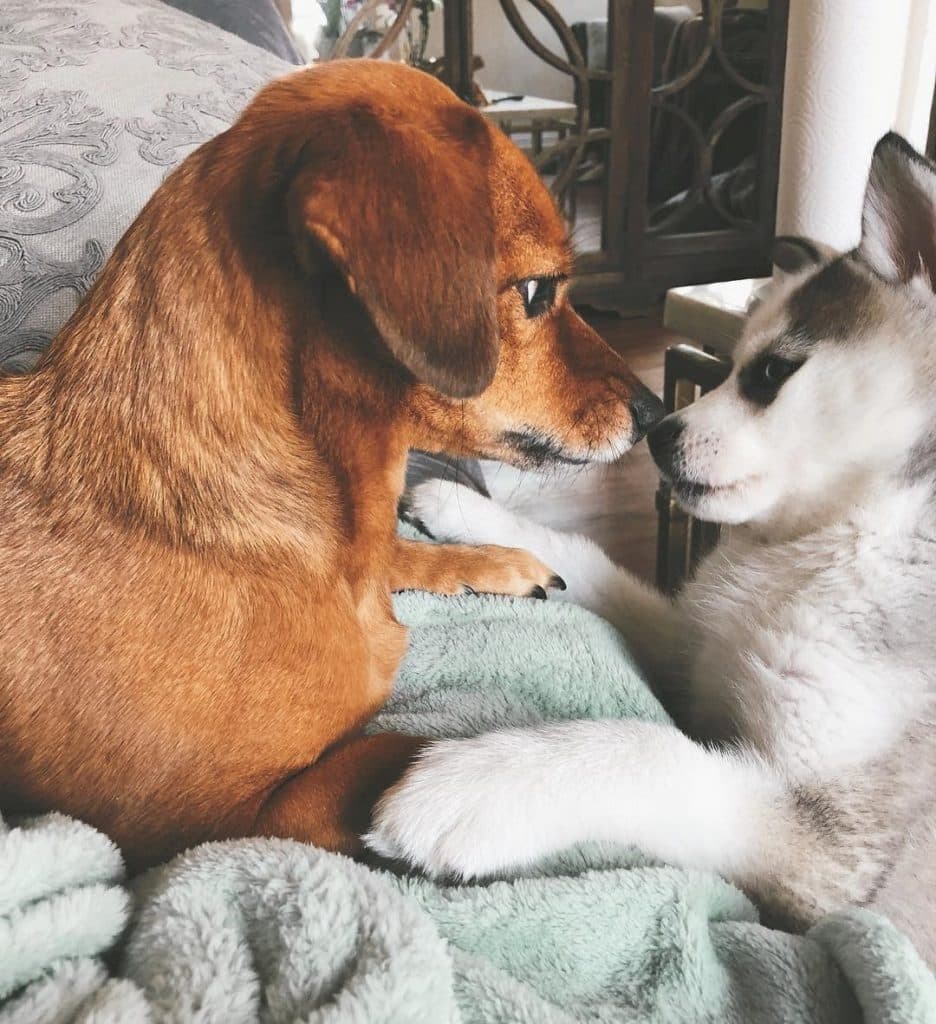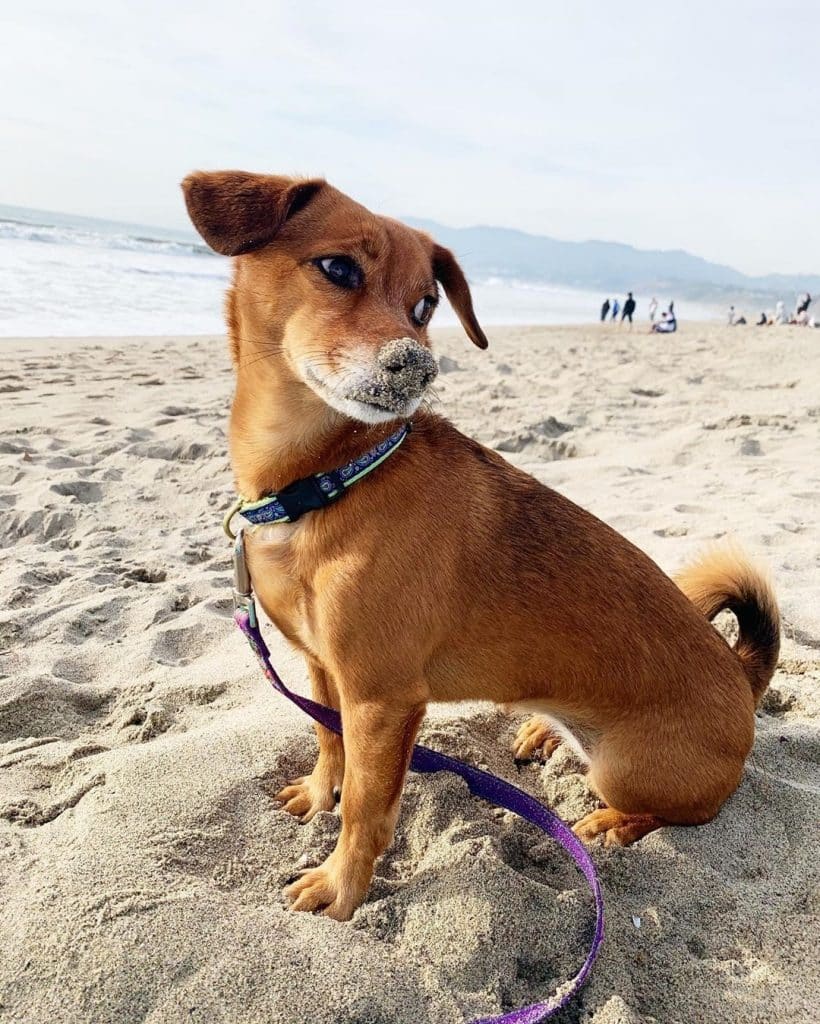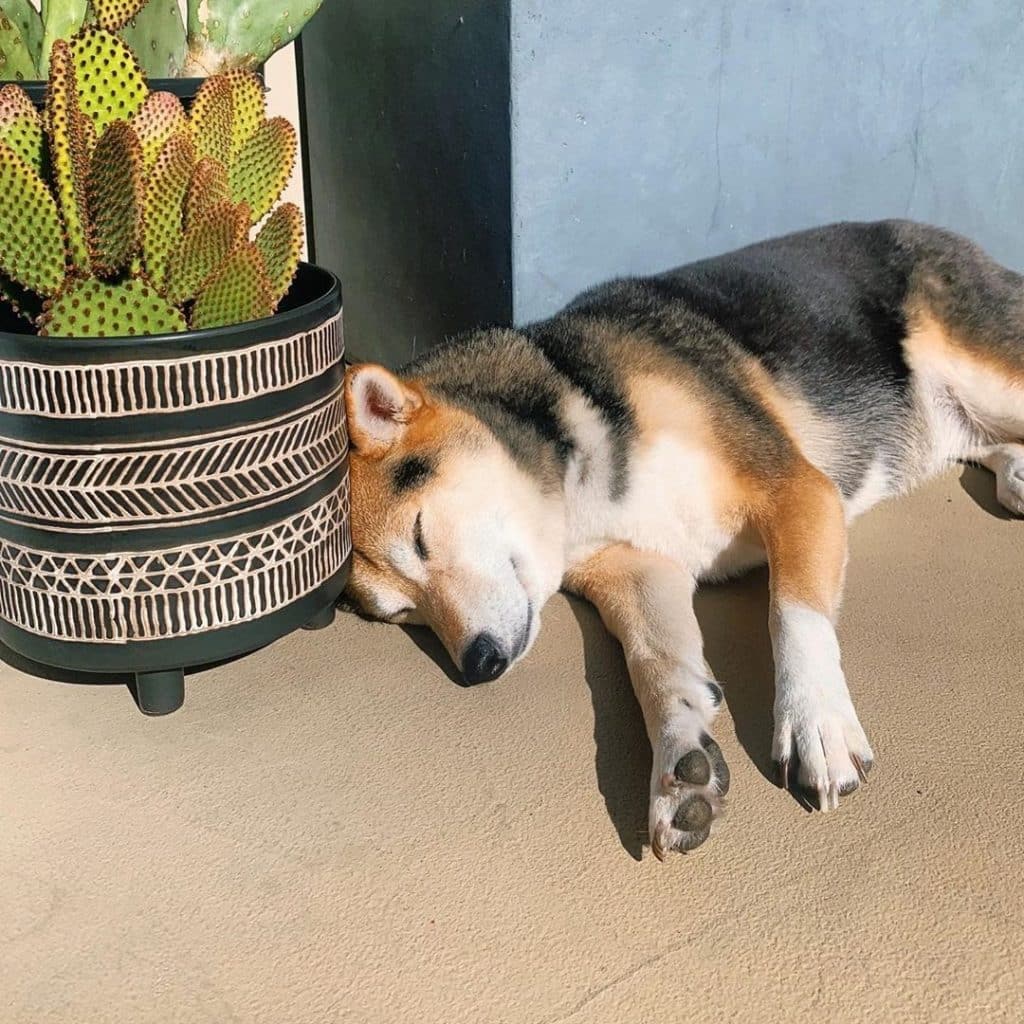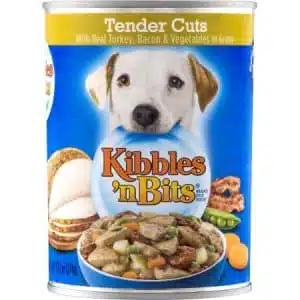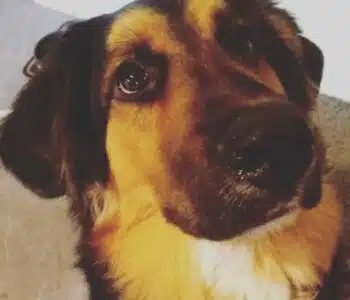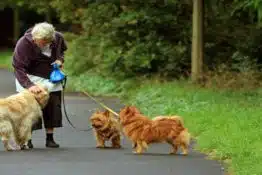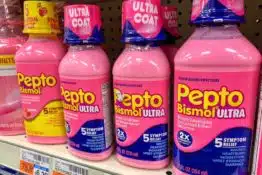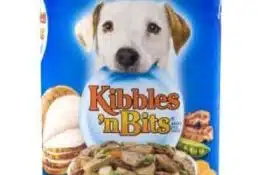
Shiba Inu Dachshund Mix: A Foxy Shibadox
The adorable Shibadox is a cross between the Japanese Shiba Inu and the German Dachshund. With both primary breeds being hunting dogs, their hybrid is an active pooch of surprisingly good health.
Although the parents are quite different in appearance, both tend to be small to medium-sized, so Shibadox won’t be large either. Hybrids remain a mystery when it comes to traits, so most experts advise you to look into both sides and get ready to be surprised.
The Dachshund Shiba seems to be an excellent mixed breed, but it still hasn’t become popular. There is not sufficient data regarding their temper and looks. What we can learn from experience is that it is a highly successful hybrid that may soon end up among the top 10 world’s most expensive dogs to own.
Shibadox:East Meets West
Credit: losangelesamigas
Since both primary breeds were designed to catch small prey, their offspring will be a hunter by nature. You are about to meet an action hero with lots of stamina and a keen sense of smell. Analyzing the parents’ temperaments shows that Shibadox can never be a classic lapdog.
Best Dog Food for Shiba Inu Dachshund Mix
Selecting the best dog food for a Shiba Inu Dachshund mix, often referred to as a Shiba Dach, requires attention to their nutritional needs. Opt for a high-quality dog food that considers their moderate size, energy levels, and potential genetic predispositions.
The One Thing Pet Owners Regret Not Doing Until It’s Too Late
Is your pet safe?
1 in 3 pets will need emergency veterinary treatment each year and it is estimated a pet receives emergency care every 2.5 seconds in the U.S.
The average cost of treating a broken bone in dogs is $2,700. Cancer treatments? Up to $10,000.
It’s why so many pet owners say their biggest regret isn’t the vet bill—it’s not having pet insurance when they needed it most.
Ask yourself: “If an unexpected $5,000 vet bill hit tomorrow, could I afford it?”
If the answer is no, it’s time to get covered.
Take a look at Lemonade. They have a great app that actually works, they have an instant chatbot that is faster and, dare we say it, friendlier than most companies’ “real” customer service and a quick scroll through Reddit will uncover… people are really vibing with this brand.
So go check them out and take a look. It takes less than a minute.

- Features farm-raised beef as the number one ingredient and this naturally delicious premium food is made with added vitamins, minerals and nutrients.
- Made without artificial preservatives or flavors and with colors only from natural sources.

- Medium adult dry dog food formulated with precise nutrition specifically made for dogs 1–7 years old weighing 23–55 lb.
- Supports natural defenses for immune support with a blend of prebiotics and antioxidants for dogs.
- Maintains healthy skin and a healthy dog coat with optimal levels of EPA and DHA.
- Promotes dog digestive health with easy-to-digest proteins and a balanced supply of fiber.
- Palatable, medium breed adult dog food has an exclusive kibble design to encourage chewing.

- Complete and balanced nutrition has antioxidants, vitamins and minerals to help maintain a healthy lifestyle.
- Optimal levels of omega-6 fatty acid nourish the skin and help keep his coat shiny and healthy.
- Whole grains and a special fiber blend support healthy digestion with a delicious roasted chicken flavor.
- Unique, crunchy texture helps clean the teeth with every bite to support good oral health between brushings.
- Proudly made in the USA with the world’s finest ingredients; contains no high fructose corn syrup, artificial flavors or sugar.
Dachshund
The famous Sausage Dog is one of the most beloved pets worldwide. They come from Germany, and most experts suggest they first appeared in the 15th century. Dachshunds were an integral part of any hunting party that targeted den animals such as foxes and badgers.
During the 19th century, they switched careers and became watchdogs and companions. Their loyalty to people earned them a place in many European households. They rose to fame when Americans discovered them.
Though Dachshunds experienced a setback in popularity during the World Wars (thanks to their German origin and name), they made a comeback and still hold the 12th place on the list of the most popular dogs of the American Kennel Club. They were one of the popular breeds of Picasso, too! If you want to know more details about Dachs, skim through our article on Dacshsund facts.
Shiba Inu
The ancient Japanese purebred Shiba Inu was an invaluable companion in hunting small game. The origin of the name is unclear. Most connoisseurs believe that it’s a Japanese word for brushwood.
Shibas developed with Akitas, but being much smaller, they never served as guardians or attack dogs. Their temper is more gentle and friendly.
The breed was relatively unknown for a long time and did not leave their native Japan until the 1950s. Shibas almost disappeared in the bombing raids during World War II. Despite the devastation, they managed to survive and started to gain popularity in the 1970s. The American Kennel Club recognized Shibas in 1993.
The Traits of the Shiba Inu Dachshund Crossbreed
Making assumptions about what the Shibadox is going to look like is not wise because puppies can take after just one parent or mix the traits in unexpected ways. All hybrids are unpredictable, with different pooches coming from the same litter.
What we can learn from studying the primary breeds is that the pup won’t be large and that it will have exceptional strength and endurance. Dachshunds are famous for their long body and short, sturdy legs. This feature seems to pass onto the crossbred offspring but is never as extreme as in the parent.
The fur usually comes from the Shiba Inu side. It tends to be long and thick. With both purebred parents’ long muzzles, the puppy is bound to inherit the trait. The ears are more Shiba-like—triangular and upright.
The eyes are mostly dark and oval-shaped, while the nose tends to be brown, especially if the dog inherits that color from the Badger Dog. When it comes to the tail, the Shiba seems to be dominant, and hybrids often have long tails, curling over the back.
You should take the described traits with a grain of salt because mixing two breeds often delivers unpredictable results. Not knowing what to expect is part of the appeal.
| Weight | 11–14 lbs |
| Height | 15–30 inches |
| Size | Small to medium |
| Coat type | Short and dense |
| Coat color |
|
| Shedding | Significant |
| Eyes | Brown |
| Nose | Black or brown |
| Ears | Triangular and upright |
| Temperament | Active |
| Life expectancy | 12–15 years |
| Hypoallergenic | No |
| Kid-friendly | Yes |
| New owner friendly | Yes |
| Breed recognition | No |
Shibadox: Small but Capable
The picture is much clearer when it comes to the temperament of the Shiba Dachshund crossbreed. These hunters are feisty and have a lot of attitude no matter where they come from. Your Shibadox pup will not be an easy pet.
This does not mean that they will be any less adorable, though. Both primary breeds are affectionate and devoted to their humans, so you can expect to gain a loyal and loving friend. Still, Shibas and Dachshunds tend to have a will of their own and can be challenging to train.
Badger Dogs are opinionated, loud, and expressive. They tend to be territorial and stubborn, so it’s important to tame their temper, or they will be a handful. They are intelligent and eager to learn, which can be used to focus on the milder aspects of their personality.
Shibas are not pleasers, either. They may not be as loud as Dachshunds, but they are strong-willed and defensive. With their love and devotion comes a bit of overprotectiveness so that they can be hostile to strangers and other dogs of the same sex.
These facts show that Shibadox is not the best dog for first-time owners. With proper training, you can still raise a friendly pooch. All you need is patience and love.
Training the Shiba Dachshund
Training is an essential part of raising a happy dog. It allows them to learn some useful commands and social skills they will need. Don’t be fooled by their stubbornness—dogs long to be accepted because they are pack animals. The sense of belonging is what they need to feel safe and calm.
It’s crucial to realize that training is a process that never ends. Dogs develop and change throughout their entire life. Like us, they need to adapt and adjust their behavior when facing new circumstances.
You should establish yourself as the pack leader right away. Your pooch will respect you and look for guidance in any situation. The role allows you to prevent any disputes or accidents, and to keep your baby safe.
With a demanding hybrid like Shibadox, the best thing is to divide the training into two parts:
- Teaching commands
- Socialization
Commands
Dogs must accept boundaries and comply with the rules you set for them. Living with a dog means that you will have to adjust some of your habits and patterns as well, but they need to obey. It is not about pleasing you—it’s about safety. No and Stop are essential commands, especially if you live in an urban area with lots of traffic.
If you happen to be a new dog owner, follow these useful tips:
- Establish a reward and punishment system. Dogs love rewards and dread punishment. This fact will help you teach them what they need to know. Keep the disciplinary measures fair and humane. Your dog will know if you go too far, and they will become unresponsive. Use treats, gifts, and praise as part of positive reinforcement.
- Use training collars. These tools are not cruel. They are designed to speed up the training process and help inexperienced owners achieve positive results. It does not mean that training collars will do all the work for you. They serve as an aid.
This hybrid tends to inherit stubbornness from its Dachshund parent. We advise you to inform yourselves well on Dach’s personality to know what you can expect from their mix. Skim through our articles on Dachshund training and Dachshund potty training for more details. Make sure to avoid the most common mistakes the owners tend to make in dog training.
Socialization
As a vital part of the training, socialization should help the dog get integrated into the community. This refers to other dogs, people, and new places. The process begins in puppyhood and should be continual. If not adequately socialized, canines can become aggressive or end up with separation anxiety.
To make sure your pooch is on the right track, you should incorporate the following into your routine:
- Playing with other dogs
- Meeting new people
- Exploring unfamiliar surroundings
The above activities will enable your pup to develop trust, courage, and tolerance. Those traits are vital for the happiness of any dog.
Dachshund Shiba Inu–Hunting for Adventure
Credit: losangelesamigas
If you are a couch potato, avoid these pooches because they like to go out and roam. Both primary breeds have a knack for adventure, so you should be ready for some action every time you hit the road.
If they inherit Dachshund’s long body with short legs, they may be slower, but their energy level will be high. Shibadox tends to drift away, but not because they want to escape from you. They need some alone time to explore and dig freely.
Yes, digging is an obsession for Shibadox. Both parents hunted small game, often extracting them from their dens and holes. Your pup will be a pro digger if they inherit the Dachshund paddle-shaped paws.
You must supervise them most of the time because they can be in trouble. Although they mean no harm, Shibadox enjoys a bit of havoc, so keep an eye on them as much as you can.
Since they are highly intelligent, they will benefit from learning tricks. Mental activity is as important as physical exercise and will exhaust your pooch. Don’t forget—a tired dog is a peaceful dog.
| Activity level | Recommended miles/week | Activity minutes/day |
| High | 8 miles |
60 minutes |
Dachshund Shiba Inu Mix Breed Beauty Rituals
Keeping your pup groomed is important for a couple of reasons. It’s a way to keep them handsome, but it’s also good for their health and mental wellbeing. You should think of it as some one-on-one quality time during which you can develop trust and affection.
Shibadox is not too demanding when it comes to grooming and maintenance. They will require brushing a couple of times a week. We recommend using a deshedder, especially if they inherit Shiba’s impressive coat. Make sure to use the best natural shampoos for your pooch, especially if they suffer from dry skin!
Clipping their nails is a must, so if you are not handy with clippers, take your pooch to the doggy beauty salon. Their teeth need brushing as often as possible, and for gum health, opt for any of the top 10 best dog dental chews.
|
Brushing frequency |
Brushes for Shiba Inu Dachshund Mix |
|
Weekly |
|
Dachshund Shiba Inu Health Concerns and Potential Risks
Shibadox is famous for its excellent health and vitality. The crossbreed proved to be resilient, which is one of the best traits a dog can have. You should not rely entirely on this fact because every pup is different. Lots of love and care is necessary to keep your pooch healthy.
The Dachshund side makes Shiba Inu Doxie prone to back problems because of the elongated spine. Jumping is not an adequate activity if your Shibadox inherited this characteristic. Additional risks include:
- Intervertebral Disc Disease
- Hypothyroidism
- Obesity
Less frequent Dachshund health issues are skin problems and seizures. While the former can severely impact their quality of life, the latter can shorten their lifespan. For these reasons, Dachshund care is the number one priority for the owners.
The Shiba Inu is not prone to illnesses but tends to develop allergies. The main causes are food, dog care products, or air-borne pollutants. Other risks include:
- Glaucoma
- Patellar Luxation
- Cataracts
We believe that with proper care and diet, most of these issues can be avoided. As your pup grows older, take them to the vet more often and introduce the best senior dry dog food into their diet.
| Major concerns | Minor concerns |
Occasional tests |
|
|
|
Sushi or Sausage: Shibadox Eating Habits
Maintaining a well-balanced diet can do wonders for the health and beauty of your pup. Dogs like junk food, and your Shibadox will probably be a fan of the worst dry dog food. You shouldn’t give in to their preferences and always stick to the best dry dog food for small dogs. If you have a puppy, you will want to find the best puppy food brands on the market.
Both parent breeds are prone to obesity, so try not to go over one cup per day. You can divide it into two meals, especially if your pooch shows gastrointestinal discomfort. For versatility, you can add the best canned dog food.
Follow the same logic with treats. They are dog candy, so don’t let them have too much. Also, avoid the worst dog treat brands, as they can only lead to excessive weight gain. If you are not sure what to get, try any of the following as they proved to be excellent:
- Wellness Core Original Grain Free Dry Dog Food
- Hill’s Science Diet Dry Dog Food, Chicken Meal, Barley & Rice Recipe
- Royal Canin Canine Health Nutrition Adult Beauty Canned Dog Food
Shiba Dachshund Mix Breed as Family Members
Credit: losangelesamigas
Although they are loving and devoted, the Shibadox can be a challenging pet. They are strong-willed and stubborn, so opt for a different dog if you are not patient and dedicated.
With correct training, a Shibadox will be friendly with children and other pets, but waiting until your kids are at least five may be better. Toddlers and small children may see dogs as toys, which can cause unnecessary problems.
The Shibadox is adaptable to various climates, but they do not thrive in small or confined spaces. The call of the wild is always present, so they are more suitable for house owners with yards. With enough activity, they could be happy in an apartment as well.
Three Valid Reasons to Get a Shibadox
Before getting a puppy, you should consider all the pros and cons of that decision. Here are some of the great traits of Shibadox:
- They are loyal and loving.
- They will make you more active.
- They are resilient and healthy.
Three Valid Reasons Not to Get a Shibadox
Not every dog is right for you, and you are not right for every dog. Here are some of the less favorable traits of Shibadox:
- They are challenging to train.
- They require a lot of physical activity.
- They are not suitable for small apartments.
Other Super Cute Dachshund and Shiba Inu Combinations
If you are a Shiba Inu admirer, take a look at Corgi and Shiba Inu mix; maybe you will fall in love. In case you prefer the Dachshund mixes, check out other adorable mix breeds of the Sausage Dog. It’s difficult to decide which one is the cutest.
When you find the pooch that you like, hit the local shelter and adopt them. You wouldn’t believe what precious gems are waiting to get a loving family. Here are some of the best dog breeds to adopt. Give it a go—it’s way more rewarding than buying.
FAQs: Shiba Inu Dachshund Mix – A Foxy Shibadox
Q1: What is a Shiba Inu Dachshund Mix, and what is it commonly known as?
A: The Shiba Inu Dachshund Mix, fondly referred to as the ‘Shibadox,’ is an intriguing crossbreed that combines the distinctive traits of the Shiba Inu and Dachshund breeds.
Q2: What are the typical traits of a Shiba Inu Dachshund Mix?
A: The Shibadox exhibits a unique blend of characteristics, including a fox-like appearance, an alert demeanor, and a compact yet sturdy build.
Q3: How much exercise does a Shiba Inu Dachshund Mix require?
A: Shibadox dogs benefit from regular exercise, including walks and playtime, tailored to their size and energy levels.
Q4: Is the Shiba Inu Dachshund Mix good with children and other pets?
A: Typically, Shibadox dogs are known for their alert and adaptable nature, making them potential companions for families with children and other pets.
Q5: How long do Shiba Inu dogs, the parent breed, typically live?
A: Shiba Inu dogs generally have a lifespan of 12 to 15 years. Providing proper care, nutrition, and regular veterinary check-ups contribute to their longevity.
Q6: How long do Shiba Inus live on average?
A: On average, Shiba Inus, the parent breed, have a lifespan of 12 to 15 years. Consistent care and attention to their health needs play a significant role in determining their lifespan.
Q7: Are there any connections between the Shiba Inu Dachshund Mix and the ‘American Foxy Dane’?
A: No, the Shiba Inu Dachshund Mix (Shibadox) and the ‘American Foxy Dane’ are distinct breeds. While both are unique in their own right, each breed has its own set of characteristics and traits.
References
- https://en.wikipedia.org/wiki/Shiba_Inu
- https://en.wikipedia.org/wiki/Dachshund
- MASTERSON, MATTHEW. SHIBA INU BIBLE AND SHIBA INUS: Your Perfect Shiba Inu Guide Shiba Inu, Shiba Inus, Shiba Inu… Puppies, Shiba Inu Breeders, Shiba Inu Care, Shiba. DYM WORLDWIDE PUBLISHERS, 2020.
- Seymour, Alex. Dachshunds: Choosing, Caring for, Grooming, Health, Training, and Understanding Your Standard or Miniature Dachshund Dog. CWP Publishing, 2016.
- Arata, Sayaka, et al. “Microsatellite Loci Analysis for Individual Identification in Shiba Inu.” Journal of Veterinary Medical Science, vol. 78, no. 3, 2016, pp. 439–441., doi:10.1292/jvms.15-0579.
- Sauvé, Christopher P., et al. “Oronasal and Oroantral Fistulas Secondary to Periodontal Disease: A Retrospective Study Comparing the Prevalence Within Dachshunds and a Control Group.” Journal of Veterinary Dentistry, vol. 36, no. 4, 2019, pp. 236–244., doi:10.1177/0898756420909657.
80% of Dogs Develop Arthritis or Joint Pain by 7 Years old – Here’s How to Protect Them
Most of us train our dogs when they are puppies to jump up on furniture. We think it’s harmless (and easier than always lifting them), but for dogs, couches and beds are very high compared to the size of their bodies.
Every time they jump it compresses their back and applies enormous force to their joints.
It’s no wonder that an incredible 80% of dogs experience arthritis or joint pain by only 7 years old.
Luckily, there is a vet-recommended solution.
It’s the PawRamp by Alpha Paw. An adjustable ramp that allows dogs to safely get on and off couches and beds. PawRamp makes joining you in bed or on the couch effortless and fun.
As a bonus, you can use code SAVE35 to get $35 off the PawRamp today.

